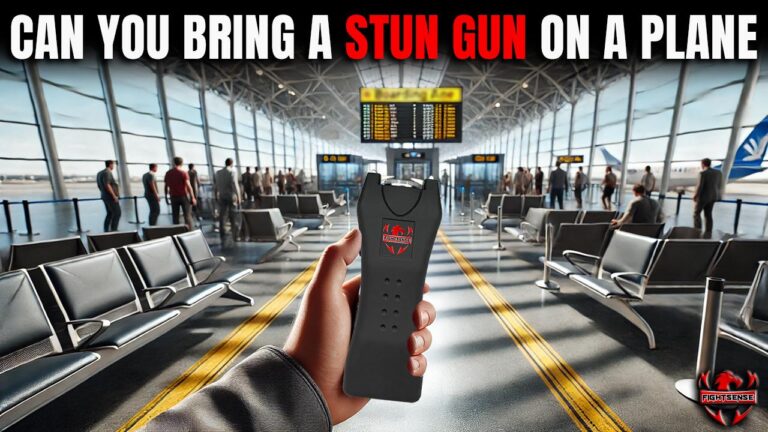Table of Contents
- Understanding State-by-State Variations in Stun Gun Legality
- Essential Permit and Licensing Requirements You Should Know
- Guidelines for Transporting Stun Guns Safely Across State Lines
- Practical Tips for Complying with Local Regulations While Traveling
- In Summary
Understanding State-by-State Variations in Stun Gun Legality
When it comes to carrying stun guns, there’s no one-size-fits-all rule across the United States. Each state has carefully crafted its own laws, reflecting varied attitudes toward personal defense and public safety. In some places, owning and carrying a stun gun is as straightforward as carrying your wallet, while others impose strict regulations or outright bans. Factors influencing these laws include the type of stun device, where you intend to carry it, and whether you need a specific permit. Understanding these nuances before you travel can save you from unwanted legal trouble.
Key points to keep in mind include:
- Permit requirements: Some states require you to have a license or permit, while others don’t.
- Restricted locations: Even in states where stun guns are legal, carrying them in schools, government buildings, or certain public spaces may be prohibited.
- Device specifications: Certain states regulate the voltage or design of the stun gun you can legally possess.
Before packing a stun gun for your next trip, always double-check the latest state statutes and local ordinances. Staying informed ensures you’re prepared and compliant, letting you focus on your journey with peace of mind.
Essential Permit and Licensing Requirements You Should Know
When traveling across different states with a stun gun, understanding the permit and licensing landscape is crucial to staying compliant with local laws. While some states require a permit to possess or carry stun guns, others may have outright bans or specific restrictions based on the weapon’s voltage or design. For example, states like Hawaii and New York have stringent regulations that demand permits, whereas others like Texas allow stun guns without any formal licensing. Ensuring you have the correct permits beforehand can save you from costly legal issues or confiscation at checkpoints.
Among the common requirements to consider are:
- Background checks mandated before obtaining a stun gun permit.
- Age restrictions typically requiring users to be 18 or older, though this varies.
- Limits on carrying stun guns in designated areas such as schools, government buildings, or airports.
- Registration or licensing fees, which can differ significantly by state.
Always check with local authorities or official state websites to confirm the precise requirements and to keep abreast of any recent legislative changes. Being proactive about permits and licenses not only protects you legally but also ensures a smoother and safer travel experience with your stun gun.
Guidelines for Transporting Stun Guns Safely Across State Lines
When traveling with stun guns across state lines, it’s essential to familiarize yourself with the specific regulations of each state to avoid legal complications. Some states classify stun guns as prohibited weapons, requiring special permits or outright bans on their possession. To stay compliant, always review local laws before your trip, ensuring your stun gun is stored securely and out of immediate reach, such as in a locked case or checked luggage if allowed. Additionally, maintain detailed documentation, including purchase receipts and any applicable licenses, which can prove your lawful ownership.
Key practices to follow include:
- Researching State Laws: Check official state websites or trusted legal resources for up-to-date info on stun gun legality.
- Secure Storage: Keep your stun gun unloaded and in a locked container during transport.
- Avoiding Airport Carry-ons: Never carry stun guns in your carry-on bags; use checked baggage if permitted.
- Knowing Interstate Differences: Understand that laws vary drastically from one locale to another-the absence of restrictions in one state doesn’t imply the same elsewhere.
Practical Tips for Complying with Local Regulations While Traveling
To ensure you stay on the right side of the law while carrying a stun gun, always research the specific regulations of your destination state before traveling. Laws can vary dramatically-from outright bans to restrictions on the device’s voltage or the type of stun gun permitted. Carry official documentation such as a receipt or certificate of purchase, and if applicable, any licensing papers to demonstrate lawful ownership. It’s also advisable to check whether stun guns are allowed in particular venues like airports, schools, or government buildings, as these often have stricter rules.
When packing your stun gun, consider the following best practices for hassle-free travel:
- Keep the device unloaded or in a protective case, especially if transporting via air or public transit.
- Inform security personnel proactively
- Comply with local carry laws,
- Stay updated on any regulatory changes
In Summary
Navigating the complex landscape of stun gun regulations across the United States can be challenging, but staying informed is essential for responsible and legal use. Whether you’re traveling for business or leisure, understanding each state’s specific rules helps ensure your safety device remains a tool for protection-not a source of legal trouble. Always check the latest laws before you pack your stun gun, and when in doubt, consult local authorities. Staying proactive and knowledgeable empowers you to travel confidently, no matter where the road takes you. Safe travels and stay secure!Check Our Other Blogs
- StunGun – Your Trusted Source for Stun Guns, Laws, and Self-Defense Tips
- PepperSprayLaws – Your Trusted Resource for Pepper Spray Information
- StunGunLaws – Your Trusted Guide to Stun Gun Legality and Safety





